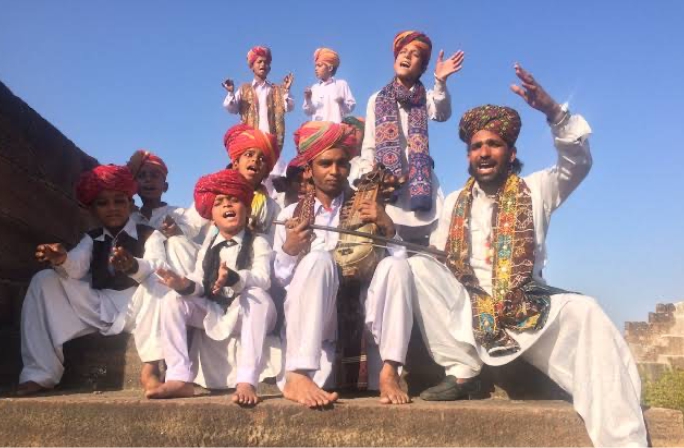


The word Manganiyar means those who ask for alms. On different occasions they would go to patrons houses and sing appropriate songs and in turn would be rewarded. The Manganiyar community is divided into two parts, one whose patrons are Hindus and the other who have Muslim patrons. The Hindu patrons mostly belong to Bhati and Rathore communities of Rajputs while the Muslim patrons are Sindhi Muslims.
Even though the Manganiyars are Sunni Muslims by birth, their lifestyle and the way of dressing up reflect the Hindu or the Ganga-Jamana culture. They present a perfect example of communal bonhomie as for generations they have been closely linked to both Muslim and Hindu families for their livelihood. Since generations the tradition of singing and composing for occasions is going strong. Singing at their jajmaans house on various occasions is their traditional profession. Describing their jajmaans illustrious history which is full of honor and pride, is their specialty. The description of jajmaans Genealogy with the support of artists is known as Shubhraj. Such is the ability of these people that they could recite all the names of the last few generations of the jajmaans within the space of a single breath. This also includes the description of their achievements. In exchange of the above, the manganiyars were rewarded handsomely in the form of grain, wheat, goat, camel, sheep, horse or cash.
Khamaycha is the most significant instrument of the Manganiyar community. It is like an ancient niche amongst string instruments which is linked with the Manganiyar community since ages. Khamaycha is made up of mango wood. The big, round, hollow part on one end of it is covered with goat skin. This instrument has 17 strings out of which three special strings are made from goats intestine and the rest of the 14 strings are made up of steel. When they touch those three special strings with their special bow made from the horse hair, it produces some soul stirring music.
Other than Khamaycha the instruments that they play are Dholak and Khartaal. Dholak is a hollow drum tapering at both ends. Both the ends are covered with leather (animal skin). They use loops of rope to tighten the animal skin at the two ends. Sometimes they use traditional Dhol also.
Manganiars (Though Muslims) sing invariably among Hindu patron families. They serve during childbirth, weddings and other ceremonies. Manganiars are very good rhythmic instruments like Dholak and Khadtal. Their musical compositions are very complex and have improvisatory rules built into it. Virtuoso rhythm playing has largely added to their success in music.